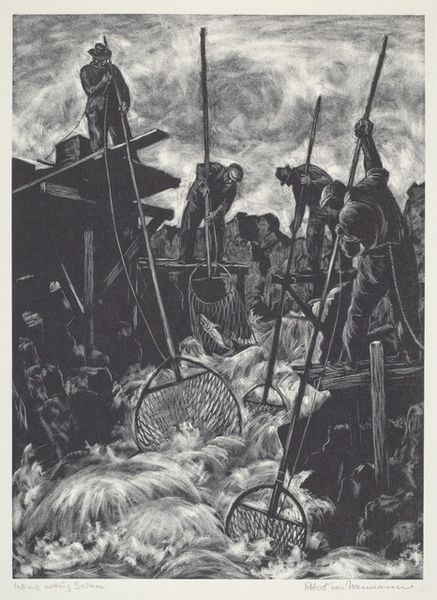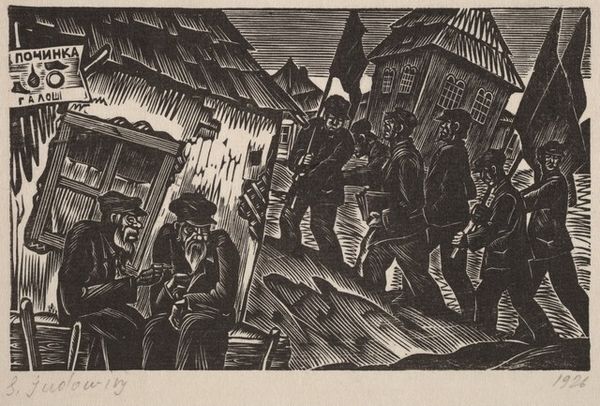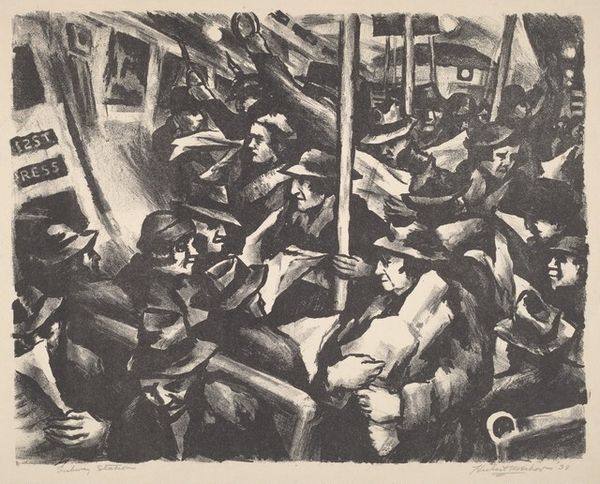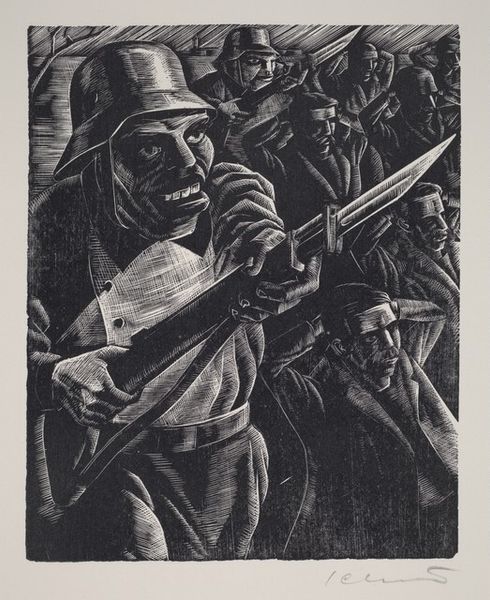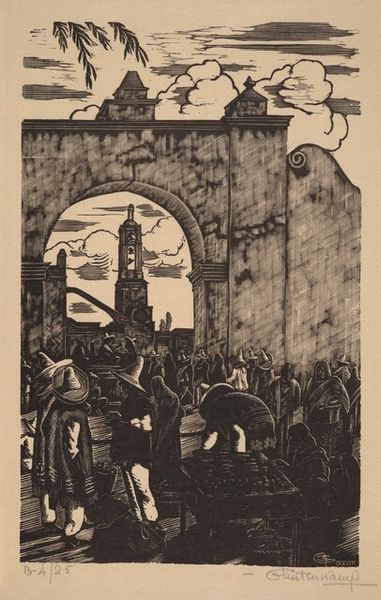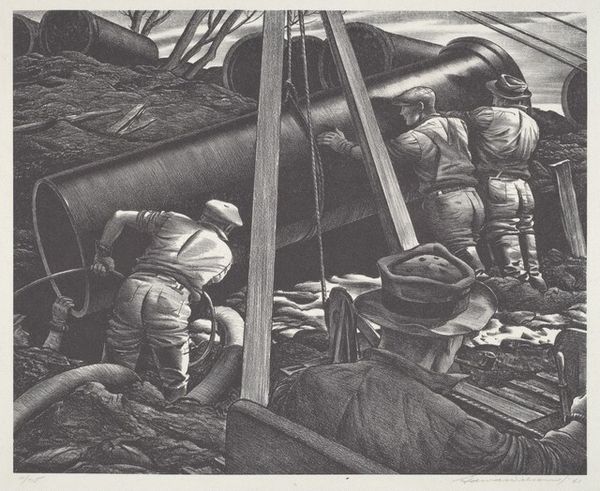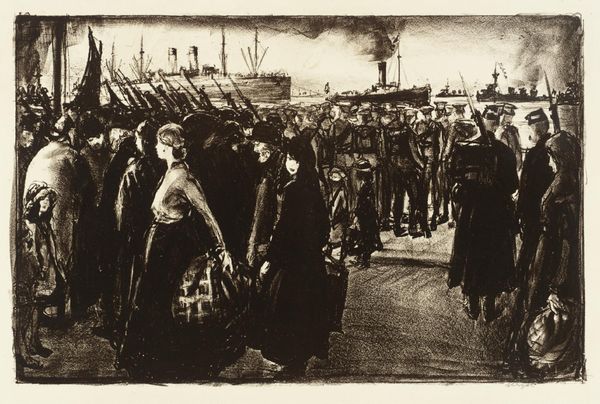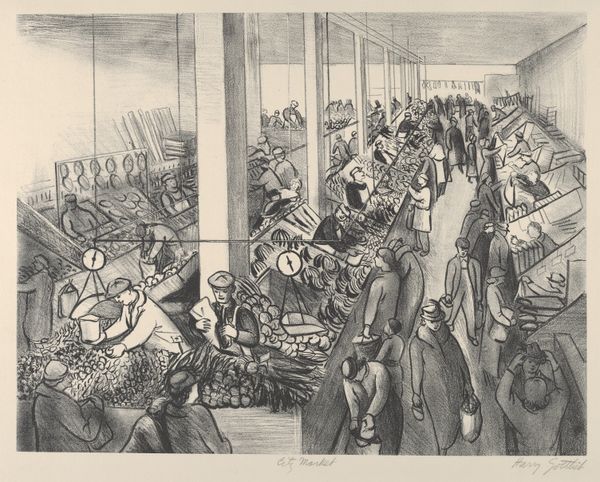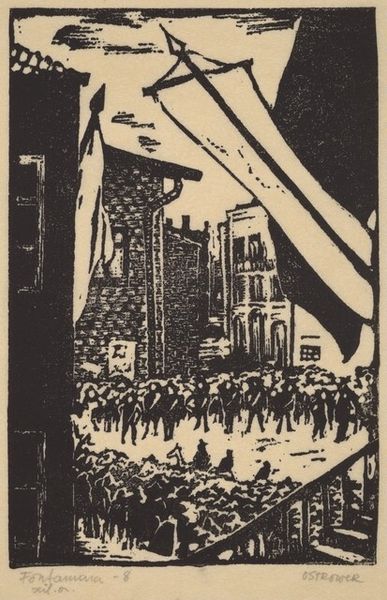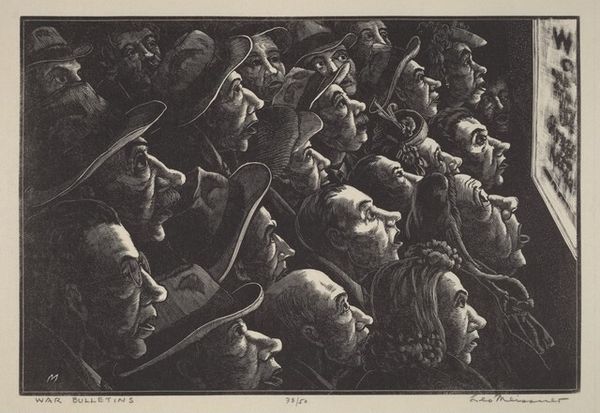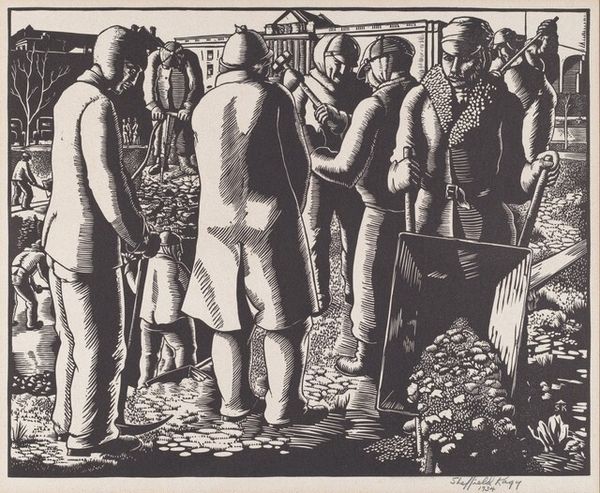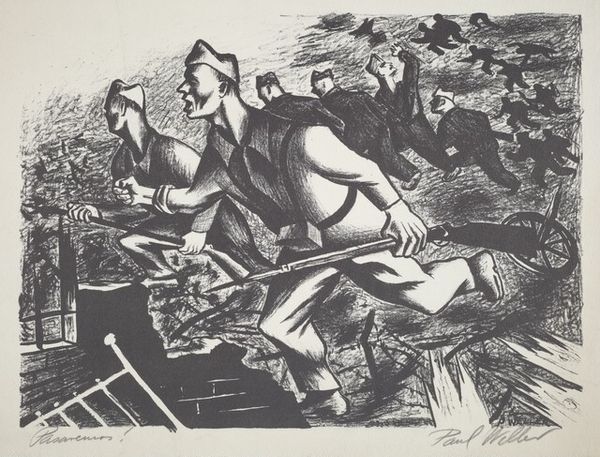
print, woodcut
# print
#
old engraving style
#
landscape
#
figuration
#
woodcut
#
line
#
genre-painting
#
realism
Dimensions: image: 20.3 × 25.7 cm (8 × 10 1/8 in.) sheet: 27.9 × 38.1 cm (11 × 15 in.)
Copyright: National Gallery of Art: CC0 1.0
Curator: This is "The Fat Stock Market," a 1932 wood engraving by the British artist Clare Leighton. Editor: It's striking. The strong contrast between light and dark gives it a rather ominous feel, despite depicting something as quotidian as a livestock market. Almost biblical in its severity. Curator: Well, Leighton was deeply interested in representing the dignity of labour. Wood engraving itself is quite labour-intensive, requiring immense skill and precision to carve these intricate designs. Editor: And that comes across clearly. The repeating imagery of pigs, pens, numbers – almost like runes in a chaotic ritual. The dark suits of the onlookers further emphasize this sense of the symbolic weight of the market itself. Do you think there’s a socio-economic message there? Curator: Undeniably. Look closely at the textures. The artist has created incredibly detailed depictions of everything, from the men’s clothing to the bristling of the pigs themselves. And note the weather; it feels damp and oppressive, reflecting the hardship faced by many during the interwar period. Editor: Right, and there's almost a symbolic death present. One of the workers is pulling a hog out of the pen...lifeless? Almost sacrificial... while these stoic figures watch on. Even the signs and numbers create the effect of imposing and ominous language. Curator: Exactly. Consider the intended audience. Leighton was concerned with representing working-class life back to itself, fostering a sense of solidarity and collective identity through the shared experience of labour and consumption. This was deliberately using "fine art" techniques in what would have been seen as a more broadly accessible and "useful" fashion, using printed reproductions, for a wider audience. Editor: So it moves beyond simply depicting the scene; it speaks to the cyclical nature of life and commerce, hinting at the vulnerability inherent in this system of making and selling that impacts those whose livelihoods are very dependent on the ebb and flow of these transactions. The dark weather, the dark materials... it is a meditation of that dependence. Curator: I think you have it. She was very involved in that, that is absolutely the way she frames her social engagement in a way that implicates the viewer through its form and process of consumption. Editor: Seeing Leighton's detailed focus, I read a somber allegory of supply and demand from nearly a century ago. A truly resonant image, regardless of whether you look at material context or recurring symbolism.
Comments
No comments
Be the first to comment and join the conversation on the ultimate creative platform.
